
The truth about elephant intelligence
Sure your dog is smart. But there’s dog-smart, and then there’s, well, elephant-smart. For example, if you hold a mirror up to your dog, he may bark or even try to play with his reflection. That’s because dogs as a species aren’t capable of self-awareness. But elephants are; they are one of a very few species of animal that can look in the mirror and realize they’re seeing themselves. As amazing at that is, pachyderms also hold the honour of being one of the even fewer species that can recognize their bodies as separate from surrounding physical objects, as suggested by a 2017 study out of the University of Cambridge in the United Kingdom.
For that study, elephant intelligence researchers had elephants step onto a rubber mat, pick up a stick from the mat, then pass the stick to a person standing in front of them. The elephants were divided into two groups:
- For Group 1, the stick was attached to the mat with a rope, which meant the elephant wouldn’t be able to pass the stick without stepping off the mat. The researchers hypothesized that only an animal with a sense of his body in space would be able to figure out that it was necessary to step off the mat.
- For Group 2, the stick wasn’t attached, which meant the elephant could pass the stick even while remaining on the mat.
As it turned out, the elephants in Group 1 stepped off the mat significantly more often than the elephants in Group 2. That means they were capable of recognizing their own bodies as obstacles to the task at hand—passing the stick. That keen level of self-awareness is so rare in the animal kingdom, we don’t generally see it even in humans before the age of two, points out one of the researchers, Josh Plotnik, PhD, assistant professor of psychology at Hunter College, City University of New York and founder of conservation charity Think Elephants International.
“Elephants are well regarded as one of the most intelligent animals on the planet,” states the lead author of the Cambridge study, Rachel Dale, a PhD candidate at the University of Veterinary Medicine in Vienna, Austria. In addition to self-awareness, elephants demonstrate complicated decision-making skills, both alone and in cooperation with other members of their herd, with whom they communicate using a combination of “gentle chirps, thunderous trumpets, and low-frequency rumbles… as well as nudges, kicks, and visual signals such as a tilt of the head or flap of the ear,” according to Scientific American. They can be seen “deliberating” amongst themselves prior to initiating a group action. and afterward, they can be seen celebrating by lifting their heads high, clanging tusks together, and intertwining their trunks. All of this suggests more than mere mental acuity, but actual empathy in elephants. (Don’t miss these photos of the most colourful animals in the world!)
But if there’s any doubt, elephants have been observed helping those who are injured by bringing them food and water, grieving for family members who have died, and burying their dead. Elephants are even capable of understanding what “pointing means,” which is an important milestone in child development, and although some dogs understand it, many otherwise intelligent animals, including chimpanzees, do not appear to.
Read on to find out other amazing facts about your favourite animals.
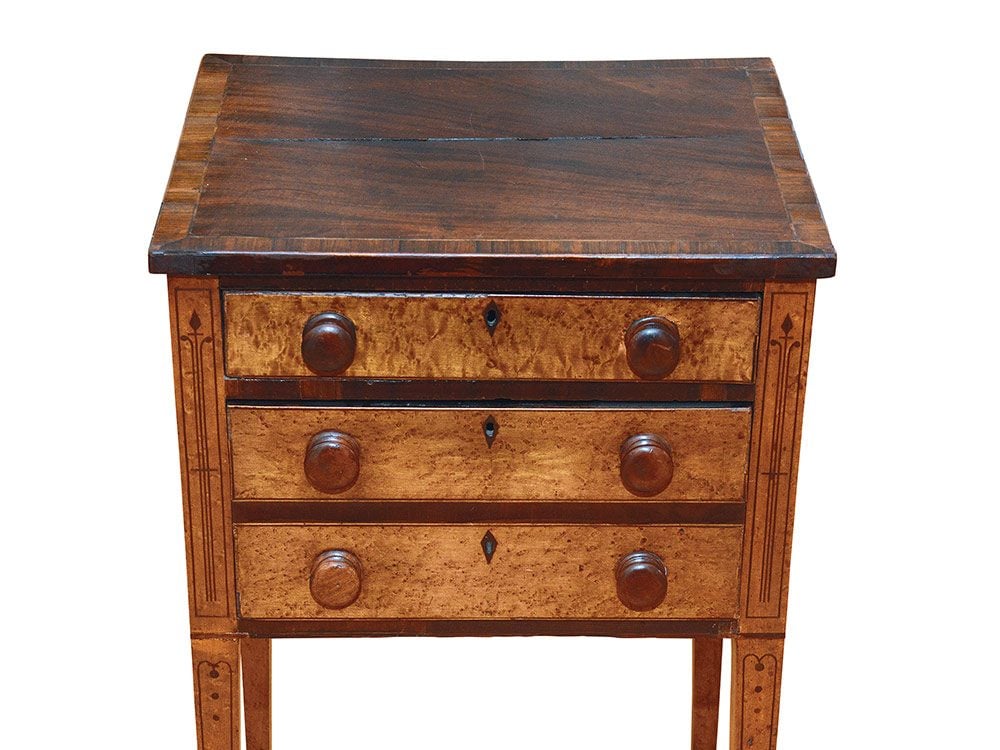
An antique collector’s final wish
Jack Craft of Finer Things Antiques & Curios in Halifax, a friend and colleague of mine, wasn’t sure what to expect when he was summoned to the hospital bed of local collector Reidar (David) Olsen, who was gravely ill. As it turned out, Mr. Olsen wanted Jack’s help to disperse his superb collection of antique furniture, the majority of which was made in Atlantic Canada. In particular, he was most concerned about an exquisite, two-drawer Sheraton stand attributed to 19th-century Halifax cabinet maker John Tulles (1771-1827). Jack appraised the table at $10,000.
“It was a collection that was put together over many years and had several excellent 19th-century pieces in it,” Jack explained. “It was the dying wish of Mr. Olsen, who placed his collection with me, that I find the best possible home for the Tulles’ table.”
It didn’t take long for Jack to land on the idea of offering the table as a donation to Government House in Halifax. Government House is one of the oldest consecutively occupied government residences in Canada, and one of the oldest such official residences in North America. Jack contacted the executive director, Christopher McCreery, who immediately expressed interest in the piece and arrangements were made for the table to be donated. Jack said he was “pleased to see the table stay here in Halifax and in a setting where everyone can see this terrific example of Tulles’ work.” (Check out this Canadian’s incredible phonograph collection.)
“He only bought the best of the best.”
Jack recalled how he first came in contact with Mr. Olsen, whose given name was Reidar, but everyone knew him as David.
“I’d known who David was for 20-plus years, although he didn’t know me. I’d see him at local auctions and would always marvel at his discerning eye—he only bought the best of the best. After I opened my store 15 years ago, he became a customer and we struck up a good rapport. It wasn’t too long before we realized we had very similar tastes across many categories, and over the past five years, he became one of my most valued customers.”
In Nova Scotia, John Tulles is considered the best furniture maker of his time. Other experts have stated that he was the finest Canadian furniture maker of the early 19th century, but little is actually known about the man. Ross Fox of the Royal Ontario Museum, in research for an article on Tulles’ furniture, was able to ascertain that he was born on December 26, 1771, in Ferryport-on-Craig (now known as Tayport) in Scotland.
Mr. Olsen’s father was from Norway and served in that country’s merchant navy during WWII. His father met his mother, a resident of Mahone Bay, N.S., around that time, and they ended up marrying and settling in Nova Scotia. Shortly after that, David was born. (Take a peek at another Canadian’s impressive antique collection.)
“He enjoyed the research as much as the collecting.”
Jack also commented on Mr. Olsen’s passion for Canadian antiques. “He took an interesting approach to buying because his interests ranged from 18th century to mid-20th century, but his greatest loves were 19th-century Nova Scotia furniture and mid-20th century Canadian Maritimes studio pottery; the two seemed to work well together in a decorative setting.”
Mr. Olsen had no children and collecting was his true passion. He and his partner would attend auctions together and travel the countryside visiting antique shops and estate sales. He enjoyed the research as much as the collecting. When his home was cleaned out there were volumes of reference books, magazines and other periodicals related to the antiques trade stacked from floor to ceiling. He was a true scholar.
David’s cherished table is attributed to Tulles based on several distinct features, particularly the inlays found in his works. In the Sheraton style, it dates to about 1815. The main carcass is constructed of bird’s-eye maple with a two-drawer configuration comprising a single drawer over one larger, deep drawer faux-fronted to appear as two separate drawers. The cross-banded top is in mahogany. The tapered legs are string-and-dot inlaid and terminate in brass caps and casters. Identical inlays have been found on labelled pieces of Tulles furniture and documented in the book Heritage Furnishings of Atlantic Canada: A Visual Survey with Pertinent Points by Henry and Barbara Dobson. The Royal Ontario Museum in Toronto has three pieces in their collection that have been attributed to Tulles. And now Government House in Halifax has one, too.
You won’t believe these 14 fortunes found in attics!
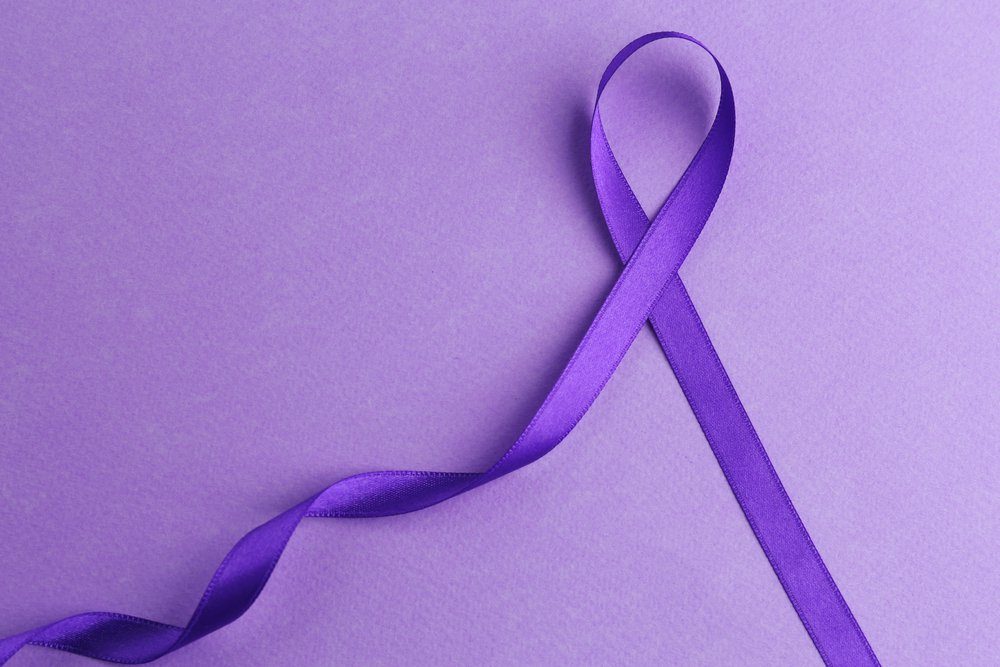
The truth about pancreatic cancer
When Jeopardy! host Alex Trebek announced that he has late-stage pancreatic cancer, fans were stunned. The cancer is incredibly tough to beat, though Trebek is optimistic. “Normally, the prognosis for this is not very encouraging, but I’m going to fight this, and I’m going to keep working,” he said during a YouTube video. “With the love and support of my family and friends and with the help of your prayers also, I plan to beat the low survival rate statistics for this disease.”
Pancreatic cancer is a stealthy and often lethal opponent: in Canada, the five-year survival rate is just eight per cent—the lowest survival rate of any form of cancer. Other notable people who have succumbed to pancreatic cancer include Michael Landon, Steve Jobs, and Patrick Swayze.
Pancreatic cancer spreads rapidly in part because of its location: deep in the abdomen and adjacent to other vital organs. This gland generates enzymes that help your digestion and hormones that control blood-sugar levels. When a tumuor forms in the pancreas, it can easily spread to other parts of the body. “Pancreatic cancer tumour cells are extremely resilient and aggressive. Even small tumours are likely to have spread to other organs by the time we make a diagnosis,” explains Timothy Donahue, MD, chief of the division of surgical oncology and professor of surgery at the David Geffen School of Medicine at UCLA.
An estimated 5,500 Canadians were diagnosed with pancreatic cancer in 2017, according to the Canadian Cancer Society. Risk factors include long-standing diabetes, chronic and hereditary pancreatitis (inflamed pancreas), smoking, advanced age, obesity, and a diet that is high in red and processed meats.
“The early signs of pancreatic cancer are somewhat vague and don’t necessarily prompt a work-up by a doctor,” says Dr. Donahue. The list of symptoms includes abdominal or back pain, weight loss, loss of appetite, or nausea. Jaundice—yellowing of the skin—can be a sign if the tumour blocks the bile duct at the head of the pancreas. These are just some of the pancreatic cancer signs to watch out for.
Still, it’s not all doom and gloom, says Nathan Bahary, MD, PhD, an associate professor at the University of Pittsburgh School of Medicine and a medical oncologist and hematologist at the UPMC Hillman Cancer Center, where he also serves as the medical director of the Pancreatic Cancer Center. “Survival is now nine per cent [in the United States], up from four per cent. That’s progress.”
This cancer may also be linked to a genetic mutation in the BRCA genes, similar to breast cancer. That means it may respond to directed treatments. One targeted therapy—Lynparza (olaparib)—performed well in a preliminary study of 154 people with a BRCA mutation. “This is promising,” Dr. Donohue adds.
Cancer specialists are also experimenting with chemotherapy combinations and treating the cancer before surgery, says Dr. Bahary. “In the next five years, I hope we will double the survival rate, and in 10 to 20 years, I hope we find a way to detect it early and find better ways to treat spreading disease,” he says. “I am very hopeful that—with people like Alex Trebek speaking out—it will lead to more funding and more cooperation between institutions, and from there we will make progress.”
This is what all those cancer ribbon colours mean.

Are you a fan of sleeping in on weekends?
Turning off the alarm and snoozing a few extra hours on a Saturday morning may seem like a good idea, but a recent study says you are actually doing yourself more harm than good by catching up on that extra sleep during the weekend.
This sounds counterintuitive because insufficient sleep is connected to a host of health consequences, including metabolic issues, anxiety disorders, heart disease, high blood pressure, and even strokes. Getting the appropriate amount of sleep is also important to the health of your brain. Shouldn’t we get more sleep when we can? Evidently not. (These are the best songs to help you sleep, according to science.)
Researchers from the University of Colorado Boulder solicited healthy young adults to participate in an extensive sleep study, recently published in Current Biology, consisting of three groups. The first group had nine hours to sleep each night of the nine-night study. The second group was only allowed five hours each night of the study, and the third group slept five hours for five nights but were allowed to sleep as much as they wanted for the following two nights on the weekend, followed by another two nights of just five hours of sleep.
In both groups where participants got insufficient sleep, they were more likely to increase snacking after dinner, and all of them gained weight during the nine-day experiment. The group who had insufficient sleep during the week, but slept in on the weekend, did not snack on the days they slept in. However, when the weekend recovery group went back to getting insufficient sleep after the weekend, their circadian body clock was timed later. They ate even more after dinner and they experienced even more weight gain.
Additional snacking isn’t the only reason people who have odd sleep schedules gain weight. There are a whole host of factors, as well as sleep’s effect on your body’s insulin production.
Not only are the extra hours of sleep you might gain from hitting snooze on the weekends not enough to mitigate or even reduce the risks associated with a lack of sleep, but abruptly adjusting your “circadian rhythm” or sleep cycle is associated with its own series of health risks. (Find out the best sleeping positions for a good night’s sleep.)
“Our findings show that muscle- and liver-specific insulin sensitivity were worse in subjects who had weekend recovery sleep,” said Christopher Depner, one of the lead researchers, in a press release for the study. “This finding was not anticipated and further shows that weekend recovery sleep is not likely [to be] an effective sleep-loss countermeasure regarding metabolic health when sleep loss is chronic.”
Loss of circadian rhythm, or sleep/wake cycle, is also associated with future sleep loss and an increased risk of developing obesity or cardiovascular disease, according to experts.
A better way to catch up on lost sleep? The National Sleep Foundation recommends taking 20- to 30-minute nap on weekend afternoons.
Next, check out the 19 things you should do all day long for better sleep tonight.
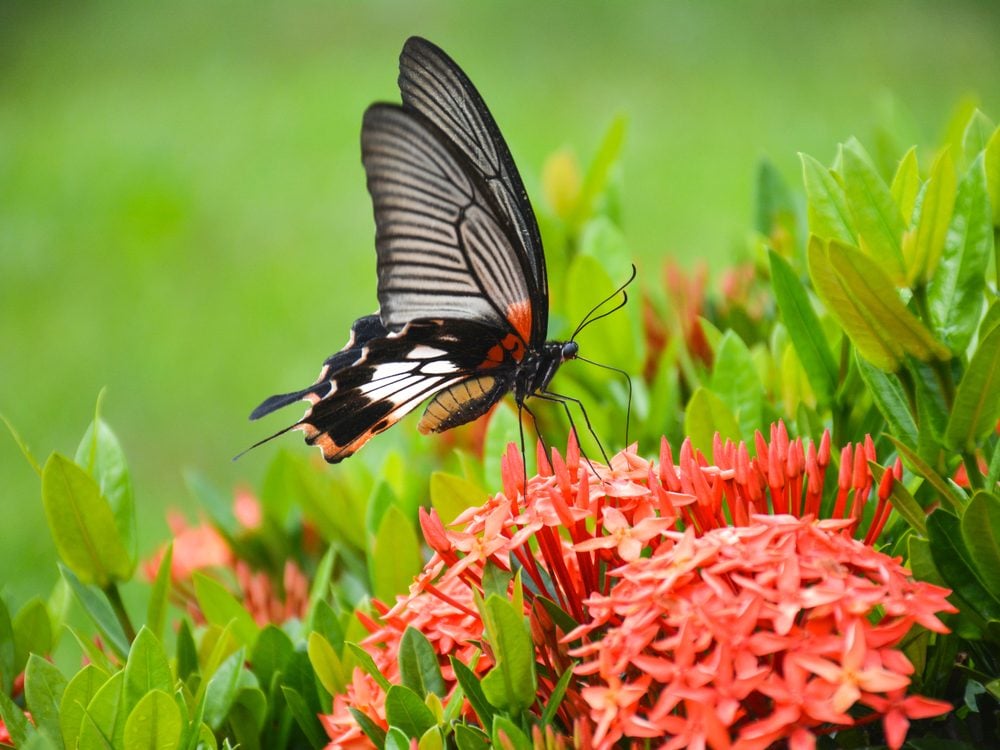
How to attract butterflies to your backyard
1. Plant a wide variety of flowers, especially yellow and purple varieties with simple open blooms. Old-fashioned varieties often provide more of the nectar butterflies seek than modern, more colourful hybrids. (Don’t miss these 10 simple tips for growing a vegetable garden—anywhere!)
2. Serve up water in a butterfly-friendly format. Butterflies will drink plain old water, but there are two simple versions that they love even more. The first method involves filling a cake pan (or other shallow pan) with sand, then saturating it with water. The butterflies will suck water out of the sand along with other minerals they crave. The second, more souped-up version, involves spreading sand in an open area of a flowerbed, then setting a mineral block—the kind cattle lick, usually available through feed dealers—in the middle. Rain, dew and normal watering will leach the minerals into the sand bed for the butterflies to enjoy.
3. Provide a butterfly maternity ward. Females frequently lay eggs, and while some will drop them on a variety of plants, others can be quite fussy. Monarch butterflies, for example, will leave eggs only on milk-weed plants. You can find information on other good host plants at butterflywebsite.com or thebutterflyfarm.com.
4. Give them a hangout. Butterflies like small nooks where they can hide from predators in summer and stay cozy all winter. Butterfly houses with slot openings look quaint, but research shows they’re more attracted to a natural environment like hollow logs, cracks in stone, loose bark or a stack of firewood.
5. Create a spot for sunbathing. Butterflies bask in the early morning sun until they’re warm enough to get on with the day. Your watering hole can serve double duty if positioned in the sun. Otherwise concrete paver bricks or stones nestled into a sunny area of the garden also give them a nice spot for sunbathing.
6. Offer shelter from the storm. The calmer the environment, the more attractive it is to butterflies. So locate all the previously discussed amenities in an area sheltered by a fence or building, or a clump of trees or large plants. (Check out these urban gardening tips that are perfect for small spaces.)
7. Play it safe. Avoid using pesticides or harmful chemicals on plants or water sources you provide for butterflies.
Here’s how to roll out the welcome mat for insects that are actually good for your garden.
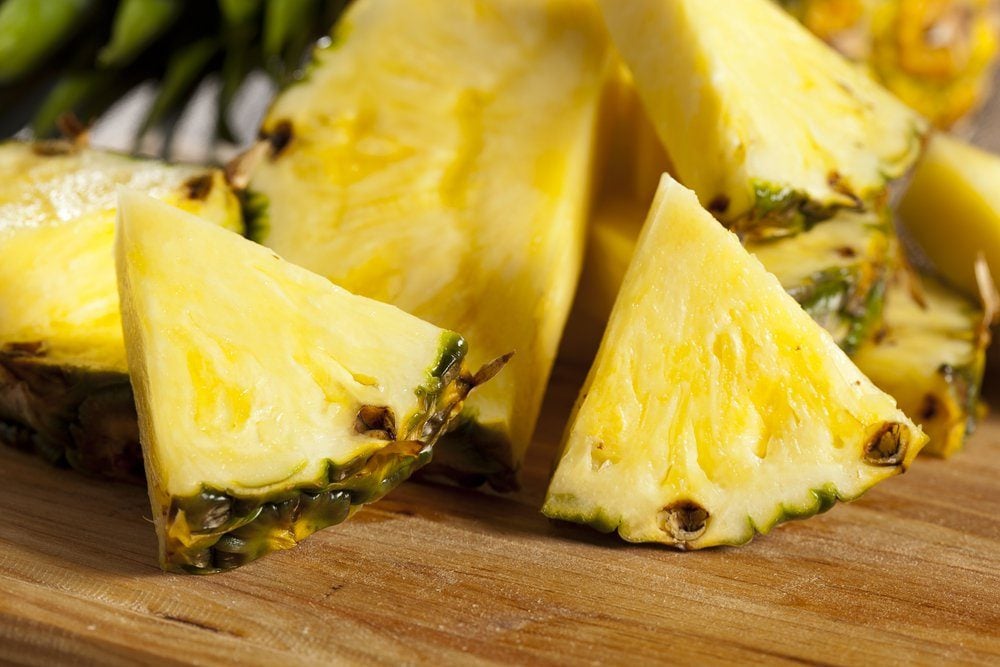
How to eat a pineapple
We thought coring and slicing was the only way to eat a pineapple—until now. If you haven’t been sniffing around Twitter recently, you might not know about the viral video making waves in the food community.
The video was uploaded on a lip syncing app called TikTok by user @曾凯 (Zeng Kai). It features a pineapple being plucked apart chunk by chunk without the aid of a knife.
This is one weird food idea that actually makes sense. It may be hard to believe, but pineapples are made up of berries, indicated by those spiky pieces. Turns out you can just tear them out, sort of like orange wedges. Who knew? (Here are more foods you had no clue you’ve been eating all wrong.)
The Internet is reacting, some singing the praises of this new method, while others marvel at how long it took us to figure it out.
We sent people to the moon but we are just now figuring out how to eat a pineapple. #humans
— Jimmy G 🌎 (@thejmmyg) March 6, 2019
https://twitter.com/str8pipes/status/1104049103992893440
This nifty summer trick is pretty ingenious, but it does have its faults. Picking pieces out of a pineapple means you might get a mouthful of core, which can be pretty hard to swallow. The stringy texture doesn’t make for a great snack, but isn’t it worth it for convenience?
Next, see why over one million people love this chicken soup recipe!

How Prince Louis Broke a Royal Record the Day He Was Born
At 11:01 a.m. on April 23, 2018, at St. Mary’s Hospital in Paddington, London, His Royal Highness Prince Louis of Cambridge was born, and so, as it happens in all families, but perhaps most notably in the British royal family, the rankings began. At the moment of his birth, Louis was:
- Third child (and second son) of the Duke and Duchess of Cambridge.
- Sixth great-grandchild of Her Majesty Queen Elizabeth II. (Here’s why Queen Elizabeth will never give up the throne.)
- Fifth in line to the throne.
But it soon became apparent there was one category in which Prince Louis, did, in fact, hold the number one ranking, and that was birth weight. At birth, little Prince Louis weighed in at a robust 8 pounds 7 ounces. That’s more than either of his siblings weighed when they were born (Prince George weighed in at 8 pounds 6 ounces and Princess Charlotte weighed 8 pounds 3 ounces at birth) making him the number one heaviest Cambridge baby. (Here are 50 more things you didn’t know about the British royal family.)
And that’s not all. Not only does Louis rank as the number one heaviest Cambridge baby, but he also ranks as the number one heaviest newborn heir to the throne in at least 100 years. And Louis is holding onto that record at the moment. There are, however, two caveats:
First, Prince Louis is not the heaviest baby ever born to the royal family. That distinction had been earned in 2010 by Savannah Phillips, the eldest daughter of Peter Phillips, one of Queen Elizabeth II’s grandsons; baby Savannah weighed 8 pounds 8 ounces when she was born. Savannah then lost her ranking in June 2018, when Zara Tindall, granddaughter of the Queen, gave birth to Lena Tindall, who weighed a whopping 9 pounds 3 ounces. Check out these rarely seen photos of royal siblings through the ages.
Second, many are predicting that Prince Louis’s record will fall upon the birth of the baby expected by Prince Harry and his wife, Meghan Markle. (Take a peek at Harry and Meghan’s new Windsor home.) This prediction is based apparently on the size of the Duchess of Sussex’s bump. However, that may or may not actually be an accurate measure of the size of the baby Meghan is carrying, according to Kyrin Dunston, MD FCOG, host of the podcast Her Brilliant Health Radio. Dr. Dunston tells Reader’s Digest that the apparent size of a woman’s pregnancy bump is affected by such factors as her bone structure and the shape and size of her pelvis and rib cage. We do know one thing for certain, though—Baby Sussex will ultimately be expected to follow these strict rules for royal children.

This is the World’s Rarest Dolphin Species
Chances are you’re most familiar with the common bottlenose dolphin. They’re the ones you’re most likely to spot offshore, see at the aquarium, and, if you’re lucky, swim with. But they’re not the only dolphins around! In fact, according to the Whale and Dolphin Conservation, 49 species of dolphins and porpoises exist, several of which are on the verge of extinction. One of the extremely rare dolphins is Hector’s dolphin, living in the coastal waters of New Zealand.
These dolphins were named after the man who first examined them in 1869, New Zealand zoologist Sir James Hector. They are known for their stocky, compact bodies and their unusual gray, black, and white colouring. Hector’s dolphins don’t have a protruding beak like bottlenose dolphins do, and their fins are rounder than that of the common bottlenose. (The World Wildlife Foundation affectionately describes their fins as resembling Mickey Mouse’s ears.) Hector’s dolphins are a threatened species and their close relative, the Maui dolphin, also found in New Zealand, is on the critically endangered list. Check out 11 wild animal species you never knew were endangered.
Organizations including the WWF are working hard to pass legislation to ban gillnetting in the dolphins’ habitat off the coast of New Zealand, as that is the primary killer of Hector’s and Maui dolphins. Dolphins often get tangled up in these fishing nets, which is not the fisherman’s intention, but an unfortunate and devastating consequence of this type of fishing method. You can help by supporting the WWF or adopting a dolphin. Or, if you’re in New Zealand, the country’s Department of Conservation also provides helpful and specific information on how you can help save this rare species.
Next, learn about the animals that have gone extinct in the past 100 years.

What Jay Leno wants you to know about high cholesterol
Though comedian and TV host Jay Leno was diagnosed with high cholesterol 20 years ago, he only made it public recently—and for a really good reason. The 68-year-old Leno has partnered with the pharmaceutical company Amgen to launch Cholesterol 911, a campaign that sounds the alarm on high LDL-C—the “bad” cholesterol that increases your risk for a heart attack or stroke. (Here are more stroke risk factors you can control.)
Today, nearly seven out of ten adults in the United States with cardiovascular disease still have high LDL cholesterol—even though they’re taking cholesterol-lowering statins, according to Amgen; for patients who have had a previous heart attack or stroke, their risk of having another cardiovascular event is one in three. Leno, who hosted The Tonight Show with Jay Leno for two decades and is currently producing and hosting the fourth season of his CNBC show, Jay Leno’s Garage, says he has taken statins for years but didn’t realize he was still at risk of having a heart attack or stroke.
“It was one of those deals where you start taking medication, but what I wasn’t aware of is the fact that you can feel good and think everything is fine but high cholesterol doesn’t work that way,” he says. Upon learning about his ongoing risk, Leno was inspired to work on an informative—and humorous—video about treatment.
Leno has witnessed the impact of heart attack and stroke, having watched several friends face these health challenges. “A friend of mine is 69, runs three miles every day, eats kale salad, and then one day had a stroke,” he says. “Meanwhile I’m eating pizza and watching TV. He’s furious at me and I agree: It’s not fair—life isn’t fair but a stroke is akin to looking the wrong way when stepping off the curb and getting hit by a car.”
Another lasting memory for Leno: A segment comedian Rodney Dangerfield did on his show in 2001. “I’ll never forget watching him do stand-up and feeling like Rodney was off his game,” Leno recalls. “While he was doing his act I asked my producer to call the paramedics.” Dangerfield then joined Leno for an interview and, while he seemed fine, Leno noticed that he was sweating more than usual.
“After the show, the paramedics came,” Leno says. “Turns out Rodney had a mini-stroke and they told me that I might have prevented a heart attack. What did that take on my part to call the paramedics? I don’t know if it changed his life but it definitely helped him get back on track.” (Learn how to spot the silent signs of a heart attack.)
Although Leno has never smoked or drank, he does love food: “I’m Italian so you just eat.” He says his favorite “food groups” include hamburgers, hot dogs, and steak. “I don’t have the healthiest diet but I’m trying to do better.” Check out the five foods that lower cholesterol naturally.
Along with changing his eating habits, he always remembers to take his statins and he tries to stay active. In the end, Leno says that if he can help one person through the Cholesterol 911 campaign, he will be very happy. “It’s fun to make people laugh for a living, but if you can save someone from a heart attack or stroke, it feels like you did something in the world,” he says. Next, find out the 10 worst foods for cholesterol.
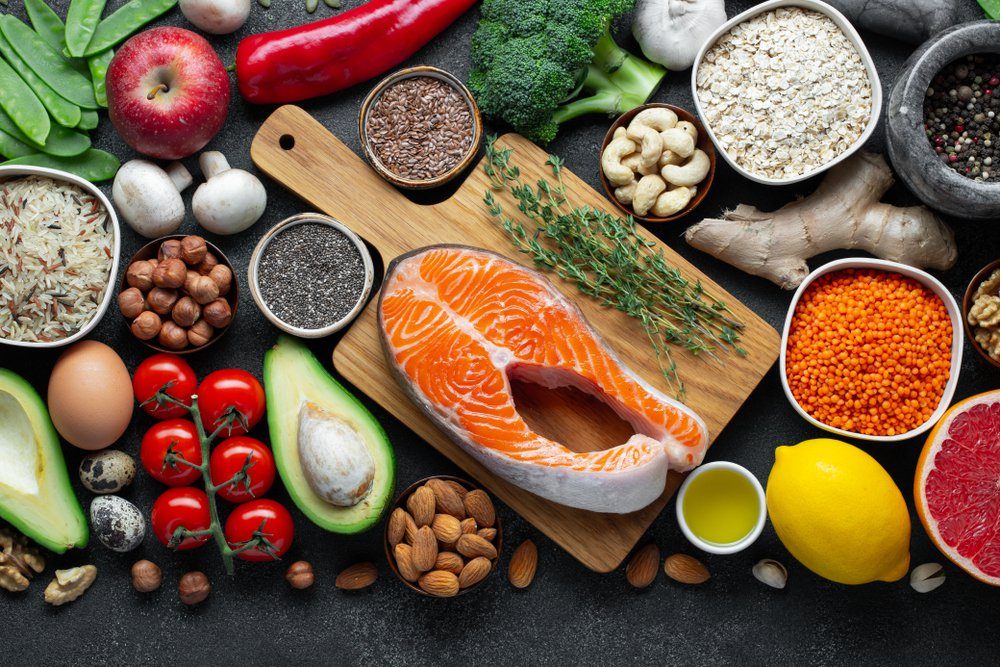
What is the new healthiest country?
Researchers seem to change their minds every other day about what kind of diet is the best to follow. As one fad diet replaces another, people are left wondering how they should really be eating. Well, according to the 2019 Bloomberg Healthiest Country Index, we should all be eating and living like Spaniards, as the European country has been named the healthiest country in the world.
So what does Spain have that those other countries don’t? A number of environmental and behavioural factors affect the outcome of the Healthiest Country Index, including life expectancy, substance abuse, disease, water quality, etc. Like other top healthy nations in the world, including Italy (which came in second place) and Iceland (which came in third), the citizens of Spain enjoy a very steady diet of fish. The Spanish diet, also known as the Mediterranean diet, also includes copious amounts of olive oil, nuts, and vegetables, and very limited red meat. As a result, the country has seen a steady decline in heart disease over the past decade, as well as a decline in the number of deaths related to cancer, as reported by the European Observatory on Health Systems and Policies. (Check out these healthy lunch ideas from around the world!)
When it comes to healthcare, Spain mainly relies on public health providers and family practices, as opposed to the highly privatized health organizations we see in the United States (which ranked 35th in the 2019 Healthiest Country Index, by the way). While Japan currently holds the highest life expectancy in the world, experts predict that Spain will take the crown from the Asian country in this regard by the year 2040, when the life expectancy at birth for it citizens should hit 86 years old.
Only time will tell if Spain will keep the title of World’s Healthiest Country in the years to come. It is worth noting, however, that out of the 169 countries examined by this study, six out of the top 10 were European nations. So if you want to live a healthier life, try these tips for making your diet more Mediterranean.